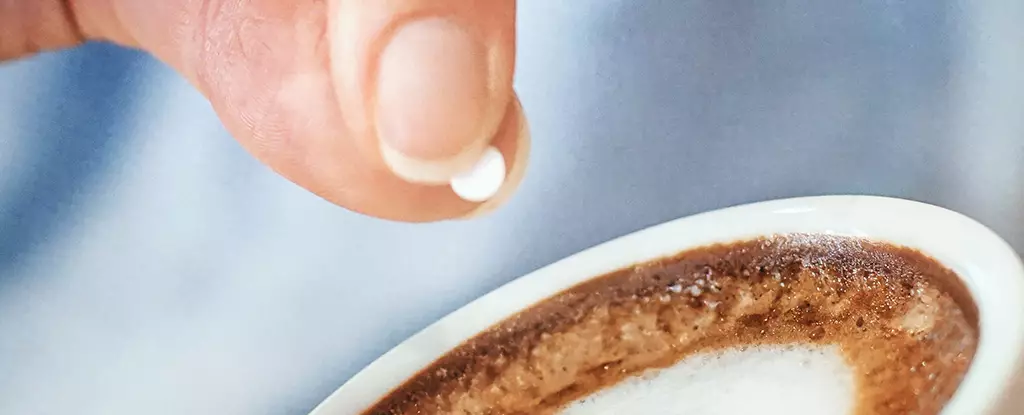Antibiotic resistance is a growing concern, threatening the effectiveness of our existing medical treatments. As bacteria evolve to resist conventional antibiotics, the need for innovative solutions intensifies. Surprisingly, a recent study from Brunel University has uncovered the potential of saccharin, a commonly used artificial sweetener, as a promising new antimicrobial agent. This illuminating research not only challenges our perception of artificial sweeteners but also opens the door to a novel approach in combating antibiotic resistance.
Exploring the Interplay Between Saccharin and Bacteria
In the quest to understand the health implications of artificial sweeteners, researchers have often focused on their metabolic effects and controversies surrounding their safety. However, the Brunel University study directed attention toward the underexplored interaction between saccharin and harmful bacteria. Conducting controlled lab tests, the researchers meticulously observed saccharin’s impact on various bacterial strains. The findings revealed that saccharin disrupts the structural integrity of bacterial cells, significantly inhibiting their growth and reproduction.
Ronan McCarthy, the microbiologist leading the research, enthusiastically notes that saccharin acts almost like a weapon in the battle against bacterial pathogens, breaking down their defenses and allowing antibiotics to infiltrate these bacteria more effectively. The implications of this discovery stretch beyond mere laboratory curiosity; they hold the potential to redefine our approach to treating infections caused by stubborn bacteria.
Saccharin: A Game Changer Against Drug-Resistant Strains
The study’s focus on notorious drug-resistant strains, such as Staphylococcus aureus and Escherichia coli, sheds light on the urgency for innovative treatments in the face of escalating antibiotic resistance. Saccharin’s effectiveness varied among different bacterial strains, but its ability to weaken the resistance of these formidable foes is an encouraging sign. Typically, developing a new antibiotic is a painstaking and costly endeavor, often taking years of research and billions of dollars in investment. Saccharin, however, is already a well-established compound, making it an efficient candidate for further development.
Furthermore, this research also highlights an innovative application: creating surgical dressings infused with saccharin. When tested on pig skin, these dressings outperformed traditional materials like silver in reducing bacterial levels. The dual action of directly attacking bacteria while enhancing the efficacy of existing antibiotics could make saccharin a pivotal player in modern wound care.
The Rising Threat of Antibiotic Resistance
As antibiotic-resistant bacteria continue to proliferate, the statistics surrounding this health crisis are alarming. Each year, infections caused by these superbugs lead to millions of deaths globally. While advancements are being made in understanding bacterial vulnerabilities, the relentless evolution of these pathogens often outpaces our efforts to combat them.
The ongoing battle against antibiotic resistance demands imaginative solutions that extend beyond mere antibiotic development. Saccharin’s emergence as an antimicrobial agent not only offers a glimmer of hope but also underscores the importance of repurposing existing compounds that are already widely used.
A Cautionary Note on Artificial Sweeteners
Despite the promising results associated with saccharin, it’s crucial to approach the topic of artificial sweeteners with caution. While saccharin might exhibit antibacterial properties, the broader health effects remain complex and multifaceted. We must consider the potential consequences of their consumption on human health, as not all effects are positive. The impact of artificial sweeteners on metabolism, gut health, and overall wellness continues to be a matter of ongoing research.
As we explore saccharin’s antimicrobial potential, it is essential to maintain a balanced perspective. There is much to learn about the full range of interactions that these compounds have within our bodies. The excitement surrounding saccharin’s possible medical applications must be tempered with diligent research into its safety and long-term effects.
Ultimately, the findings from Brunel University provide a compelling narrative, highlighting that buried within our everyday substances, like saccharin, may lie answers to contemporary health dilemmas. The advancement of understanding the interplay between these compounds and human health could pave the way for new strategies in fighting one of the most pressing issues in modern medicine: antibiotic resistance.


Leave a Reply